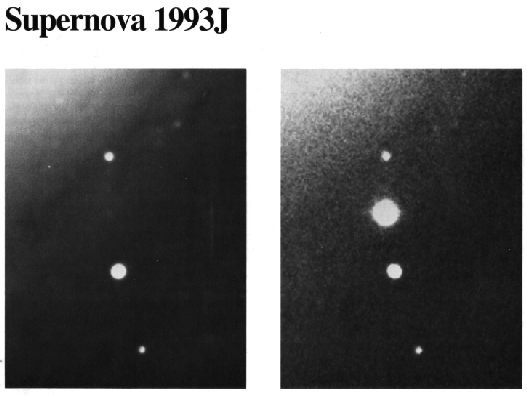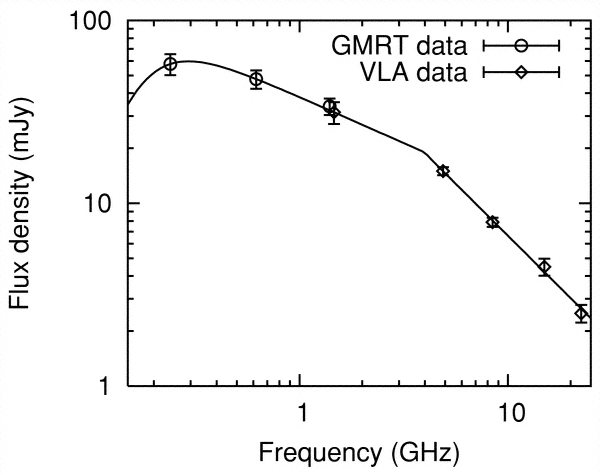
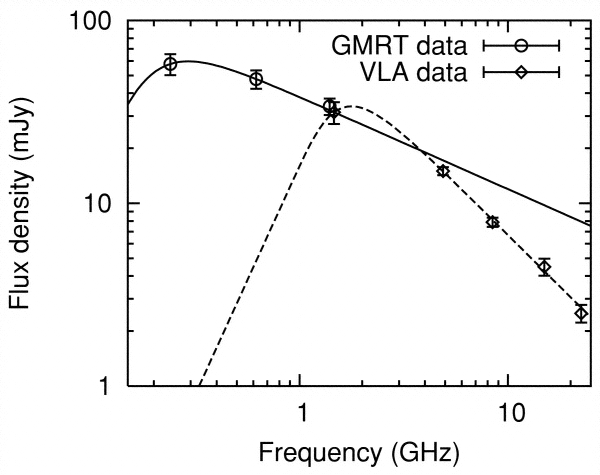 Top panel: GMRT and VLA data showing steepening in the
spectra of SN 1993J (Chandra et al. 2004). Lower panel: Th efits to only GMRT data and only VLA data. In absense of wide band spectrum, both measuremnts would have resulted in faulty
estimations of the synchrotron spectrum.
Top panel: GMRT and VLA data showing steepening in the
spectra of SN 1993J (Chandra et al. 2004). Lower panel: Th efits to only GMRT data and only VLA data. In absense of wide band spectrum, both measuremnts would have resulted in faulty
estimations of the synchrotron spectrum.
|
With the radio spectrum of a young supernova, we can probe the
conditions in the magnetized plasma where this radiation originates
from relativistic electrons. These electrons are believed
to be accelerated in the interface region of the supernova blast
wave shock and the circumstellar medium.
The most critical parameter of the plasma that affects the synchrotron radiation spectrum is the strength of the magnetic field. This is often estimated indirectly under assumptions of equipartition of energy between the magnetic fields and that of relativistic particles or by fitting the radio flux density and turnover wavelength. In many classical radio sources, such as supernova remnants like the Crab or Cassiopeia A, or in luminous radio galaxies, the radio spectral index is found to steepen at high frequencies.
This is due to the so-called synchrotron aging of the source, as during the lifetime of the source, electrons with high-enough energies in a homogeneous magnetic field will be depleted because of efficient synchrotron radiation compared with the ones with lower energies. An observation of a synchrotron break can yield a measurement of the magnetic field independent of the equipartition argument if the age of the source is known.
Multifrequency radio studies of a supernova such as SN 1993J, which was bright enough offered
such a possibility.
The near-simultaneous spectrum of SN 1993J obtained by combining the Giant Metrewave Radio Telescope (GMRT) low-frequency data with the Very Large Array (VLA) high-frequency data around day 3200 since explosion showed signature of synchrotron aging, which enabled us to estimate the magnetic field in a young supernova independent of equipartition assumption, for the first time.
Our measurements yielded the magnetic field of the order of ~0.3 milli Gauss as opposed to the equiparition values of 0.034 milli Gauss. This indicated the the actual magnetic field to be order of magnetic higher
than the value one would have estimated using the equipartition assumption, and would have
led to wrong estimations of the physical properties of the supernova shock.
|
Understanding mystery of Type IIn Supernovae
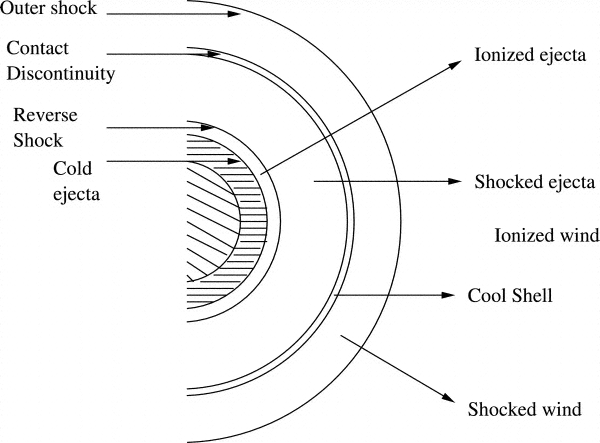
Type IIn supernovae are the most mysterious class of supernovae. Their progenitor stars
are a big mystery....
Detail
Radio reverse shocks in Gamma Ray Bursts

While reverse shocks are seen in one every 24 optical afterglows of gamma ray bursts, they are much more prevalent in radio afterglows...
Detail
Evolution of X-ray absorption in SN 2010jl
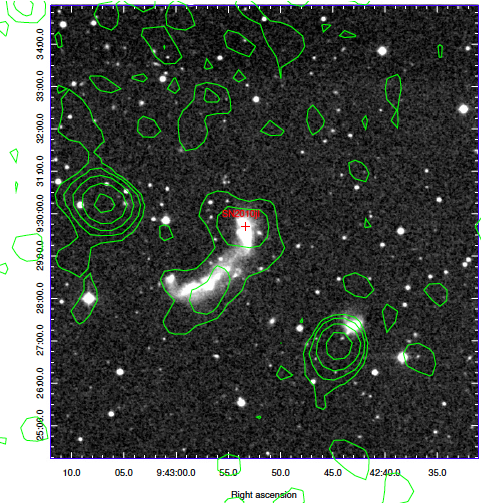
SN 2010jl have
revealed a spectacular evolution of the column density from X-ray observations....
Detail
Radio afterglows of Gamma Ray Bursts

We have studied a catalog of radio afterglow observations of GRBs over a 14 year period from 1997 to 2011...
Detail
Most distant cosmological burst GRB 090423
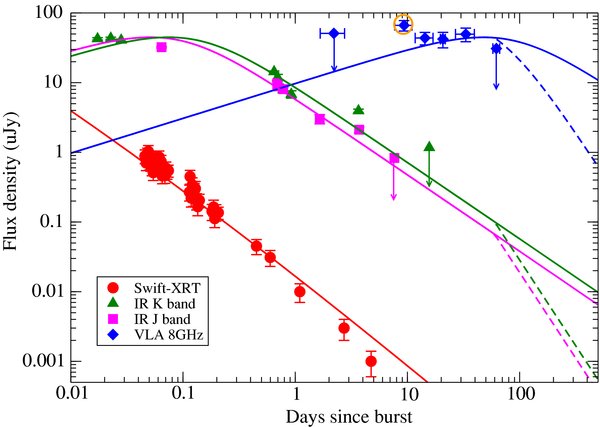
Radio detection of a redshift 8.3 GRB 090423 have revealed the environments of the Universe at such high redshift epochs...
Detail
Chromatic jet break in GRB 070125

Inverse Compton scattering can solve the famous
mystery of lack of achromatic jet breaks in a subsample of Swift bursts....
Detail
Circumstellar interaction in Type Ia SN 2006X
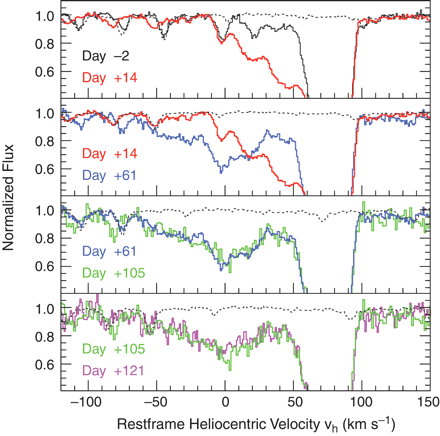
First time spectroscopic evidence of
circumstellar matter has been seen in a thermonuclear supernova...
Detail
SGR 1806-20: a violent bomb blast in Milky Way
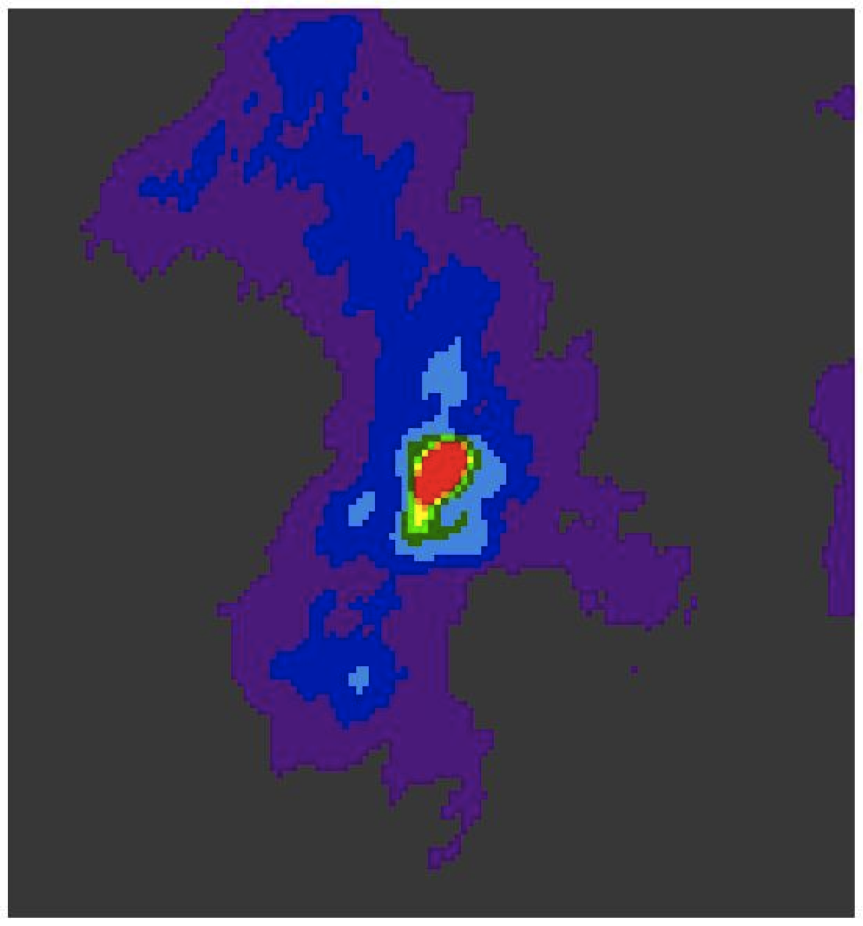
Lowest frequency radio emission at 125 cm has been seen in this most violent Galactic explosion .....
Detail
Synchrotron aging in supernova SN 1993J
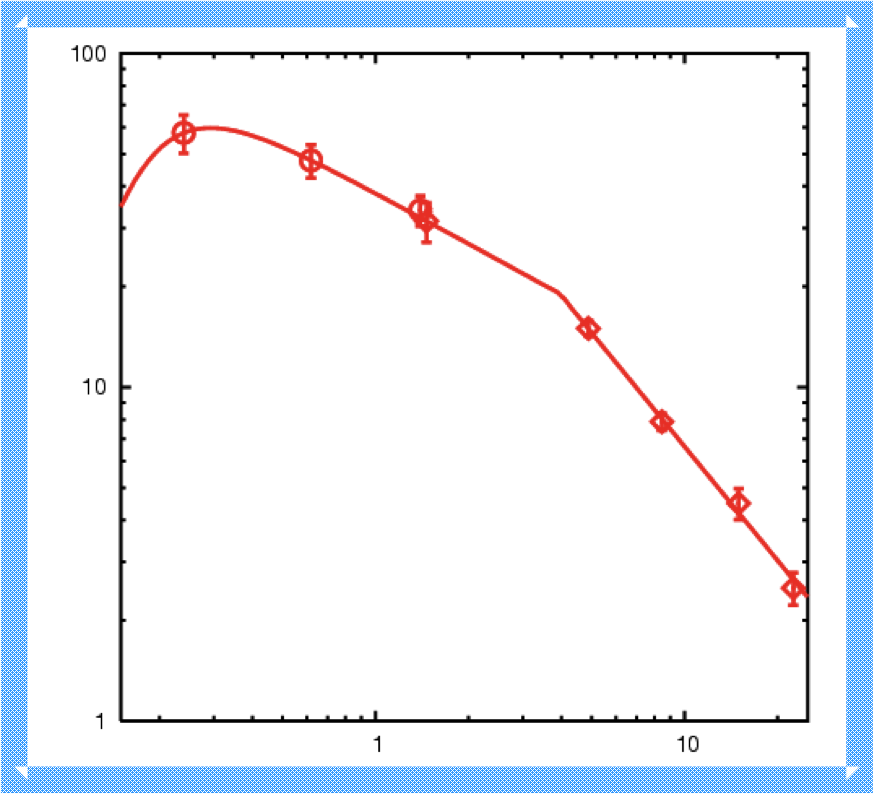
First time direct signature of synchrotron
aging was seen in VLA and GMRT observations of SN 1993J.
Detail
